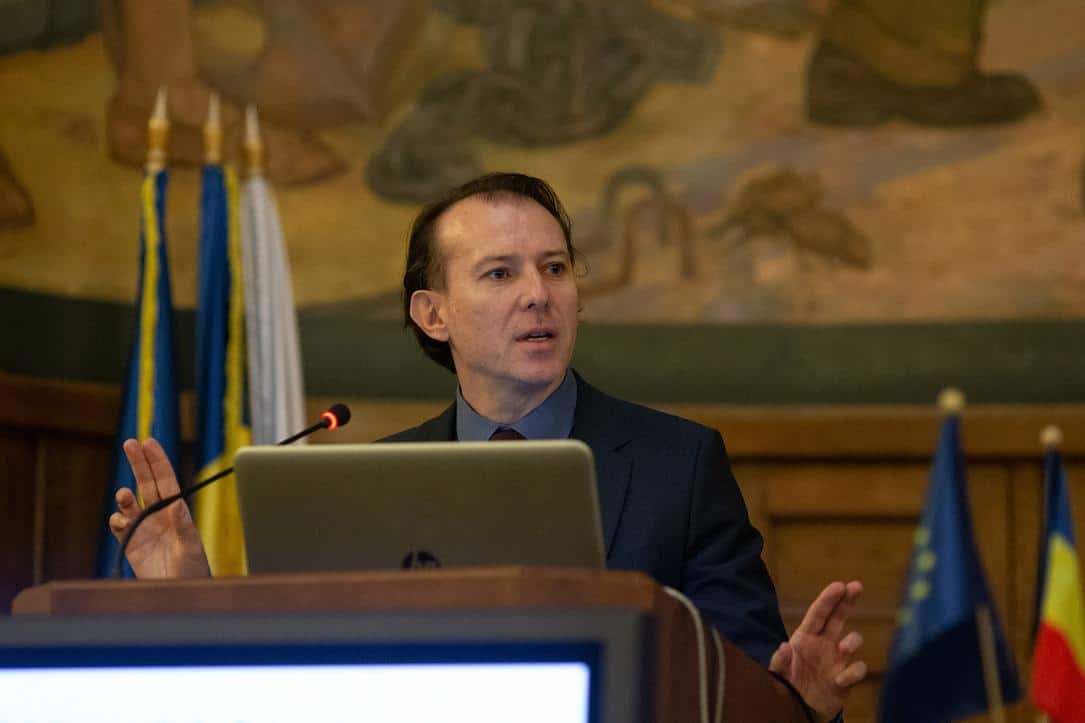Romania’s technology industry has exploded in recent years. Technology behemoths such as Google, IBM, Microsoft, and Vodafone have established operations in the country’s expanding urban areas to capitalize on one of the country’s most valuable assets—its people. According to a 2017 study conducted by information services firm KeysFin, over 106,000 information technology (IT) workers were employed in urban areas such as Bucharest and Cluj, with approximately 7,000 new graduates added each year. Can this launchpad be efficiently used by the government to solve the country structural problems?

Conflicting trends in Romanian economy
Last year, Romania was elevated to the group of high-income countries by the World Bank, and was promoted to the World Bank’s group of high-income countries. Still according to the WB, it achieved 79 percent of the EU-28’s average living standard, equal to Poland. Romanian analysts believe that this factor is critical for investment rating decisions and OECD accession negotiations. In 2020 still , Romania outperformed seven other Member States on the actual individual consumption (AIC) indicator. The other indicator of living standards, GDP per capita at standard purchasing power parity, places Romania at 69 percent of the EU average, comparable to Latvia but higher than Greece (68 percent), Croatia (65 percent), and Bulgaria (65 percent) (53 percent ). Because the AIC is calculated on the basis of goods and services actually consumed by individuals, the difference between the indicator and GDP indicates that Romania performs poorly in production but well in consumption. The Government’s newly launched National Investment and Economic Recovery Plan aims to achieve convergence with European economies, with GDP per capita at standard purchasing parity equal to 87 percent of the EU27 average by 2025. However, 2020 was no normal year.
Economic data are still awaited in order to assess COVID’s impact in 2021, but definitive numbers are not good for 2020 and barely better for 2021. Thus far, the National Institute of Statistics (NIS) has confirmed the first-quarter GDP growth in 2021, and a small but considerable recovery in Q2. Yet, with annual growth rate of -3.8 percent in 2021, the lowest level since 2010, convergence with other EU country is doubtful. This extremely bad result was influenced in part by the pandemic’s effects, but also by government policies.
More significantly, in terms of GDP formation, a significant shift in the growth structure was outlined in the last few years. Trade surpassed industry as the sector with the greatest contribution. Indeed, even prior to the COVID crisis, industry was visibly slowing in terms of volume. The pandemic effect merely exacerbated an already-existing decline in industry, with the GDP contribution of the industry (including construction) declining by one percent. . As a result, industry contributed a negative 1.2 percentage points to GDP growth. While merchandise trade contributed 65.74 percent to GDP (in 2020), its contribution to economic growth was only one percentage point. A sector however seems to shine. Last but not least, the crisis has not damaged agriculture, whose weight is higher in Romania’s economy than most of the EU economies.
Construction, information and communications (IT&C), and professional and support services were the primary sectors responsible for the economy’s overall performance. The evolution of the services sector as a whole contributed significantly to the economic growth performance of 2.4 percent, owing to their dominance in GDP formation.
During the pandemic the IT and value-added services industry and their contribution to Romania’s GDP created economic development, while the public sector put enormous quantities of cash into the market. The government created compensation packages to help lockdown enterprises and their employees. However, it came as EU money too that Romania was not absorbing because of its inability to develop suitable projects and channeled them to small and medium-sized firms.
The Romanian government actions during Covid spread
The Government launched last year the National Investment and Economic Recovery Plan, which aims to assist businesses in resuming operations, increasing investments and competitiveness, and encouraging the recapitalization of the business environment by 2030. Romania is targeted in all areas where it falls short (public infrastructure, digital transformation, the new technological revolution, the transition to a sustainable economy). The Government’s specific measures, on the one hand, provides grants to sectors where public health measures imposed under Covid-19 have resulted in decreased activity and debt accumulation, and on the other hand, encourage investment in areas with high development potential. Additionally, the plan includes a series of state guarantees to ease the process of obtaining financing.
This did not of course compensated the extremely harsh measures that the government set up after Covid Spread. The 19 million Romanians lived under full national lockdown in an effort to slow down the spread of the SARS-CoV-2 pandemic COVID-19 during multiple months.
The National Bank of Romania’s recent report on financial stability recognises two new severe systemic risks that didn’t even exist in the previous report from December 2019. Investor confidence in emerging economies is expected to deteriorate rapidly, as are domestic macroeconomic balances, including the structure and cost of financing the budget deficit. Another significant risk is the uncertain and unpredictable regulatory environment in the financial-banking sector, while two other risks are of moderate magnitude and concern non-repayment of loans contracted by the non-governmental sector and real economy access to finance.
The general consolidated budget will run a deficit of nearly 7 percent of the current year’s estimated GDP. In the same period last year, the deficit was -9.20 percent of GDP. Both are extremely terrible numbers. Numerous revenues were lost as a result of pandemic-related measures.
Income tax receipts were 12.5 percent lower than in the same period last year. Property taxes and fees decreased by nearly 35% as a result of travel restrictions and deferrals. Contributions to public insurance, the primary source of revenue for the general consolidated budget, also decreased by 17 percent as a result of fiscal facilities granted and a sharp decline in activity in several economic sectors.
Thus, while revenues were 5% lower than the prior year’s same period, expenditures increased by up to 15% in nominal terms. The increase in expenditures was due to an increase in social assistance payments, which were more than 21.9 percent higher, significantly higher than the general level but normal in pandemic conditions. On the other hand, the state increased spending on non-reimbursable projects, capital expenditures, and expenditures on goods and services.
A turn of action

Economist Bogdan Glavan a, professor at the Romanian-American University in Bucharest, pointed out in a Balkan Insight interview that the nature of the crisis itself to explain the solid economic performance of Romania from the beginning of the pandemic. Contrary to many earlier crashes, the downturn in COVID-19 was not caused by system instabilities, but by government constraints.
Government mandated lockdowns have been extremely criticized all across the political spectrum : “It’s a veritable national freakshow, a carnival of freaks,” (Profit.ro, Clever Group, 2nd Romanian Media Group) “A discrimination against a whole nation” (ActiveNews Romania, part of another big Media Group). Criticism arrived from all sides, including prominent politicians affiliated with either the PSD or the PNL : a Member of the European Parliament, Mr. Cristian Terhes – who we can classify as a left-conservative- , elected on the lists of the Social Democrat party , has even tried to bring a case to the ECHR, while major protests sparkled all around the country last march. This has not however seen any consequence in the urns, as both the main parties, the Social Democrat and the Liberals, voted for Covid measures.
Recently, the government position turned, and Prime Minister Florin Citu excluded new lockdown. In a press conference the 14th of September, he clearly stated he hoped to end 2021, with a 7% deficit, “but the problem is that it must fall from 7% to 3%,”. Romania cannot afford to raise taxes that harm investors’ appeal. “The deficit will not reduce unless more efficient taxes are collected,” he maintained.
The adaptability of key sectors of the Romanian economy, including IT and hospitality, are indicators of confidence. In addition, the promise of access to the European Commission’s $29 billion recovery plan put Romania in a ‘unprecedented favorable environment,’ . But EU money inflows are accompanied by renewed pressure to put the books in shape and fulfill the pledge of the center-left government to achieve fiscal austerity without surrendering the economic development that the prior left government fuelled by fueling wage and pension increases.
This is also seen in the latest decisions by new prime minister : on Wednesday 15 September, Romanian Prime Minister Florin Cîtu has indicated that he will no longer be seeking closure of commercial operations when the incidence of Covid increases above 3 per thousand.
“We need some type of monitoring to keep the economic operations open. The green certificate […] is one of the recommendations to continue to be open to these activities. Restaurants can remain open on a green certificate basis; this is a proposal, we will see whether the certificate is granted at CNSU. […] We now have a vaccination and we are also able to check whether someone is vaccinated, tested or unwell. It is a means of keeping the economy open, but at the same time following certain laws, “
The application of this new measure is however doubtful. The resignation of the party brings to an end a week of political turmoil that began when Prime Minister Florin Cîţu fired Justice Minister and USR-Plus member Stelian Ion for failing to sign off on a ten-billion-euro regional infrastructure development program. “This morning, we accomplished what we announced,” Dan Barna, USR-leader, Plus’s wrote online Tuesday. “We registered and resigned at the prime minister’s office, along with the USR PLUS ministers. We are progressing.” The junior coalition party’s six ministers have all resigned. The ruling coalition, which controls 56% of parliament seats, is made up of Cîţu’s Liberals, USR-Plus, and the Hungarian minority party UDMR.
Entrepreneurs skeptical of government measures
The economic growth of 13% in Q2, above the anticipated level, recently announced by the Government, is not reflected in the reality of the business environment, say most Romanian entrepreneurs, according to a study conducted by CIEL ROMANIA, one of most important software manufacturers for companies. Instead, almost all entrepreneurs say that costs have increased with suppliers. Also, many of them claim that instability and lack of predictability will persist in the Romanian business environment, given the current political context.
Approximately 62% of the Romanian entrepreneurs say they don’t feel the economic growth announced by the Romanian Government. The main reasons are that the utility prices and the prices in stores have increased significantly during this period, according to the CIEL Romania study. In addition, more than 26% of companies do not notice any real change compared to 2020, despite the optimistic figures officially announced, and the lack of predictability caused by the political environment creates uncertainty in the business environment.
“Romanian entrepreneurs need more predictability, but, as we have seen for several years, the political environment creates rather an uncertainty in the business environment,” said an anonymous source at the Romanian Chamber of Commerce to Blue Europe. “To all these are added the pandemic restrictions, which affect the business. At the moment, the only source of predictability is the investment in digitization, in software solutions that provide accurate data and help to make correct and coherent decisions, without risk “.
The aforementioned survey, on of the most significant in the last few months, also reveals that over 71.4% of the entrepreneurs admit that the predictability level of the local business environment this year has decreased compared to 2020 and only 7.5% of them consider that the level is up.
The respondents consider the economic advance announced by the Government is not reflecting the reality in the market. For 91.8% of the entrepreneurs, the costs with the suppliers increased during this period. Moreover, only 9.5% of companies recorded increases in turnover.
Against a background of an uncertain market, as the data from the study show, Romanian entrepreneurs decided to give more importance to digitalization. The CIEL study shows that 45% of companies made investments in digitalization during the pandemic, and 37% plan new investments in the coming months.
The amounts allocated for digitization were below 1,000 euros in 61.2% of cases, between 1,000 and 3,000 euros for 27.2% of the companies and over 3,000 euros for 11.6% of them.
The most purchased software products by entrepreneurs are those for medium-sized companies – such as management software, e-commerce, production and accounting – but also those for large companies – such as ERP systems, in many cases customized to the specific needs of companies.
Among the participants in the CIEL Romania study, 32% are service providers, 25% are active in trade, 15% in construction, 12% in IT, and the rest have businesses in the industry producing materials, food or clothing. About 14% have a turnover between 1 and 5 million euros, 2.7% exceed this threshold, and 83% of the responding entrepreneurs have a turnover below 1 million euros.
The European Commission published the European Innovation Scoreboard 2021 on 21 June 2021, showing that Europe’s innovation performance is still improving across the EU. On average, the performance of innovation has risen by 12.5% since 2014. Convergence is continuing inside the EU with nations of lower performance developing faster than those of greater efficiencies, therefore decreasing the innovation gap between them. Romania scored last.





